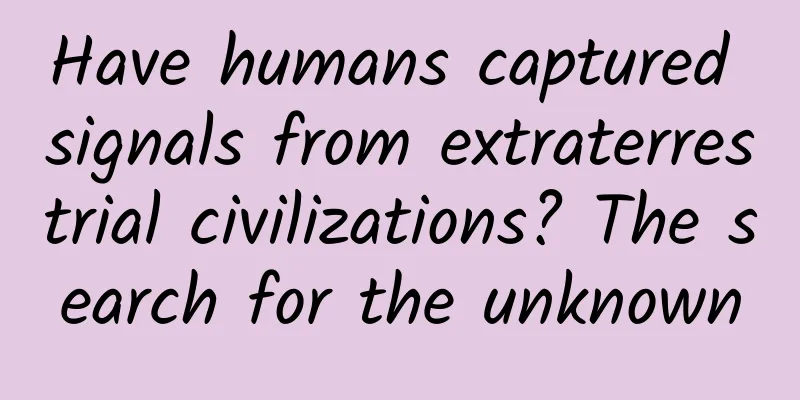Did the Xia Dynasty really exist? These "shocking secrets" are not even mentioned in history textbooks...

|
Do you still remember the irresistible smell of ink when you received your new history textbooks in middle school? Do you remember what the textbook said about the Xia Dynasty? (Tadpole's serial interrogation) On December 2, the 2021 "Xia Culture Forum" also opened. According to the Henan Daily, a new workshop for processing bone and horn tools was discovered at the Erlitou site in Yanshi, Henan, known as the "Xia Capital"... For a time, the distant and mysterious Xia Dynasty once again attracted heated discussions. Newly discovered processed bones at the site, picture from Henan Daily Some people may complain that there is too little knowledge about the Xia Dynasty in middle school textbooks! What other secrets does the Xia Dynasty have? First of all, did the Xia Dynasty exist? This question is a bit mysterious! After listening, spray again... We all know the records of the Xia Dynasty in great works such as "Shangshu", "Zuo Zhuan" and "Records of the Grand Historian", but these are old-fashioned documents. These documents have a big bug, which is that they have been copied, added to and deleted by later generations, and have been circulated for thousands of years, resulting in a high rate of errors. Also, because no systematic evidence of Xia Dynasty writing has been found in archaeology, there have been constant voices questioning whether the Xia Dynasty really existed. Compared with documentary materials, bronze inscriptions with the nature of "real records" have higher credibility. If there is a record of the Xia Dynasty in the Qingtong inscription, then the authenticity of the Xia Dynasty will be further advanced. So, is there one? Instrument name: Shuyi Bell Host: Shuyi, a senior official of Qi during the Spring and Autumn Period Era: Duke Ling of Qi or Duke Jing of Qi (581-554 BC, or 547-490 BC) Unearthed: In the fifth year of Xuanhe in the Northern Song Dynasty (1123), the people of Linzi County, Qingzhou, obtained the land from the ancient city of Qi (now the ancient city of Qi in Linzi, Shandong). There are more than a dozen coins The inscription on the Shuyi Bell mainly records that the owner of the bell, Shuyi, was ordered by the Duke of Qi to lead his army to destroy a country called "Lai" and was rewarded. Among them, there is the following passage: The contents marked by the red and blue lines come from the two Shuyi bells respectively. To sum up, the contents are roughly as follows: Tang Fu received the mandate of heaven, destroyed the Xia Dynasty... Xian had nine states and lived in the land of Yu. When we see the key words "Tang", "Fighting Xia", "Nine Provinces" and "Yu", we can guess without any explanation that they probably describe the history that we are familiar with, such as Shang Tang's conquest of Xia and Dayu's division of the Nine Provinces. Vessel name: Qin Gong Gui (Gui was a very popular vessel for storing grain in China during the Shang and Zhou dynasties, and was sometimes also used as a ritual vessel for sacrifices) Owner: Qin Jinggong Yingshi, the 13th king of Qin Period: Qin Jinggong period (576-537 BC) Excavated: It was accidentally dug out by a shepherd boy in Li County, Gansu Province in 1917 while playing "digging the ground" on the local Miaoshan Mountain. Qin Gong Gui (Source: National Museum of China) The inscription on the Qin Gong Gui mainly records that Qin Jinggong sighed during the sacrifice: Our great Qin State has gone through twelve generations of monarchs since its founding. It can be said that the country's name is feared by all. I can inherit the merits of my ancestors, make the country stable, and make the people live and work in peace and contentment. (Don't worry... your descendant Ying Zheng not only feared all directions, but also unified all directions...) It is worth noting that there is also the following content in the inscription: "My imperial ancestor, who received the mandate of heaven, followed the footsteps of Yu... and served the barbarians and Xia." The fact that the ancestors of the Qin people assisted Dayu is clearly mentioned here, and it is very likely that it refers to Boyi, an important contributor to Dayu's flood control. Keywords such as "Xia" and "Yu" appear again. Vessel name: Sui Gong Xu (or Bin Gong Xu, Xian Gong Xu, Xu is a food container that became popular in the Western Zhou Dynasty) Owner: A certain "Sui Gong" in the Western Zhou Dynasty, that is, the ruler of the Sui State in the Western Zhou Dynasty. Sui State was located approximately in the northwest of Ningyang, Shandong Province today. In the 13th year of Duke Zhuang of Lu (681 BC), Sui State was destroyed by the Qi State. Age: Based on the inscription and the characteristics of the artifact, most scholars believe that this artifact was dating to the middle of the Western Zhou Dynasty. Source: Purchased from overseas cultural relics market in 2002, unearthed information is unknown Sui Gong Hu (Source: Beijing Poly Art Museum) The inscription on this bronze ware has a total of 98 characters, the first sentence of which mentions "Heaven ordered Yu to spread the earth, cut mountains and dredge rivers", which coincides with the record in "Yu Gong" in "Shang Shu" that "Yu spread the earth, cut wood along the mountains, and established high mountains and great rivers", thus providing strong evidence for the legend of "Yu the Great controlling floods". Through the records of the Xia Dynasty and Dayu in the above three bronze artifacts, we have come to the following facts: 1. The legend about Dayu, a key figure in the Xia Dynasty, and his heroic deeds in controlling floods had already become popular at least in the middle of the Western Zhou Dynasty. The discovery of the inscription on the Sui Gong Hu reflects this. 2. At least in the Zhou Dynasty, people everywhere had a general understanding of the Xia Dynasty and Dayu. Careful people may have discovered that the bronze vessels recording Xia and Dayu come from different regions and countries such as Qi, Qin, and Sui. Back to the topic, although the middle school history textbook only has two pages of text on the Xia Dynasty, it actually hides many secrets that you don’t know. For example… Secret 1: Why is the Erlitou site considered the capital of the Xia Dynasty? This is the result of the cooperation between archaeologists and historians. According to historical records, the Xia people once lived in southern Shanxi Province and western Henan Province. In 1959, archaeologist Xu Xusheng began to conduct archaeological surveys in this area and discovered many sites including the Erlitou site. Later, archaeologists conducted carbon-14 dating on the Erlitou site, and the age of some of the remains in Erlitou was also within the traditional Xia Dynasty chronology. A ceramic mold with dragon patterns unearthed from Erlitou Site IV. The ceramic mold is a mold for making bronze ware. This discovery shows that Erlitou Site once produced bronze ware with dragon patterns (Source: Erlitou Xia Capital Site Museum) More importantly, in addition to the palaces and tombs mentioned in textbooks, the Erlitou site also discovered dragon-patterned pottery molds that symbolize royal power. In recent years, archaeological work has even discovered a carefully planned road network and one of the iconic relics of the capital site - the city wall. The distribution of the city wall remains and the road network of the Erlitou site are vividly called the "Erlitou Nine Grids" by the Xia and Shang archaeological community (Source: Zhao Haitao) Secret 2: The palace of the Xia Dynasty was so shabby! The palace at Erlitou Ruins… Stop talking nonsense, is that a palace? It’s just a shabby thatched house… In fact, this picture only shows the "main hall" part of Erlitou Palace No. 1. In addition to the main hall, Palace No. 1 also consists of courtyards, corridors, gates and other parts. Its more complete restoration picture is as follows: Restoration of Palace No. 1 at Erlitou Site (Source: Wiki) The plan layout of the foundation of Palace No. 1 at Erlitou Site (Source: Wiki) Remember, this is a palace from over 3,000 years ago. Anyway, I think it is luxurious enough... Besides, I really want to pry open your sleepy little eyes. Don’t you see that is Palace No. 1? If there is Number 1, then there must be other palaces… such as Palace No. 2. The plan layout of the foundation of Palace No. 2 at the Erlitou site. The red circled M1 is a large tomb. There is another large tomb behind the palace. Based on this, it is speculated that Palace No. 2 was a ancestral temple or even a mausoleum (Source: Yanshi Erlitou: Archaeological Excavation Report from 1959 to 1978) Secret Three: How to use the turquoise bronze medal? This thing looks very nice, how do you use it? First of all, this thing was found in many tombs at the Erlitou site, and the positions of the turquoise bronze plates were different in different tombs. This became one of the breakthroughs for archaeologists to speculate on its usage. For example: placed around the waist of the deceased, it may mean that the turquoise bronze plaque was worn around the waist during one's lifetime. The idea of wearing the Erlitou turquoise bronze medallion around the waist (Source: CCTV National Treasure Archives) Other scholars believe, based on ethnological data, that turquoise with images of gods on it should be worn on the chest while dancing to summon the gods. There are three types of deity images on Erlitou turquoise bronze plaques published in China. Among them, the "crocodile" probably refers to today's rare reptile - the Yangtze alligator. The Yellow River crocodile pattern on a Shang Dynasty bronze goblet was unearthed in Shanxi. Its prototype may be the Yangtze alligator (Source: wiki) The divine tool worn on the chest in the "Maya Revelation" and the idea of wearing the Erlitou turquoise bronze medal on the chest (Source: CCTV National Treasure Archives) It is hard to imagine that the distant and mysterious Xia Dynasty still hides so many secrets! I believe that through the efforts of generations of archaeologists, its true appearance will be revealed to us more and more clearly. References: Institute of Archaeology, Chinese Academy of Social Sciences. Collection of Bronze Inscriptions of Yin and Zhou Dynasties[M]. Zhonghua Book Company, 2007. Wang Fu. Xuanhe Bogutu [M]. Chongqing Publishing House, 2010. Zhao Mingcheng. Records of Inscriptions on Metal and Stone[M]. Qilu Publishing House, 2009. Xia Mailing. The inscription on Shuyi's bell and the conquest of Lai by the Duke of Qi[J]. Guanzi Journal, 1993(2):7. Zhu Zhongxi. The cultural charm of the Qin Gong Gui unearthed in the early Republic of China: A review of Mr. Ding Nan's interpretation of the inscription on the Qin Gong Gui[J]. Journal of Tianshui Normal University, 2015, 35(1):3. Yingchun. Poly's new collection of treasures: Sui Gong Hu, which records Dayu's flood control and governance with virtue[J]. Art Market, 2002(1):2. Jiang Hao. The Complete Translation of the Book of Documents in Modern and Ancient Chinese[M]. Revised Edition. Guiyang: Guizhou People's Publishing House, 2009 Institute of Archaeology, Chinese Academy of Social Sciences. Erlitou, Yanshi: Archaeological Excavation Report from 1959 to 1978[M]. Encyclopedia of China Publishing House, 1999. Chinese Academy of Social Sciences. Erlitou: 1999-2006[M]. Cultural Relics Publishing House, 2014. Zhao Haitao. New understanding of the settlement morphology of Erlitou city[J]. Archaeology, 2020(8):12. END The author of this article: Archaeology Xueqi, Master of History from Wuhan University, majoring in Shang and Zhou Dynasty archaeology. Tadpole Musical Notation original article, please indicate the source when reprinting Editor/Xiao Xitushuo |
<<: Do you still remember these moments in 2021?
>>: Smiling like a tumbler can prevent falls
Recommend
How to promote bidding? Just read this article!
As a newbie in bidding, you may have this questio...
Is your understanding of the “mixed” COVID-19 vaccine correct?
Xinhua News Agency, Beijing, February 21 (Reporte...
Zhengzhou optimization outsourcing, why should enterprises choose SEO outsourcing optimization company?
As we all know, outsourcing is the hiring of expe...
iOS 15 beta4 is released, fixing a lot of bugs and improving fluency. It is recommended to update
[[413780]] On one side is the official version of...
Is toothpaste afraid of water? Will it be ineffective if you dip it in water?
There is a long-standing topic on the Internet: s...
The "new version of traffic lights" circulated on the Internet makes people anxious, and what makes people even more anxious is the red lights all the way...
Yesterday, the topic of "new version of traf...
Analyze the development of NetEase Cloud Music and QQ Music from the perspective of operation and business model!
O. Analysis Outline Figure 1. NetEase Cloud Music...
Who will win the battle of words? ——Front-end and back-end passionate debate
Are you still worried about having nowhere to dis...
How detailed are the design details of big companies? Let’s take a look at the actual combat case of QQ Browser!
Data from the third quarter of 2020 show that the...
Apple mobile phone marketing strategy!
An excellent brand is inseparable from excellent ...
Sales of hemorrhoid cream tripled after the holidays! "Youth with hemorrhoids", look here: Is it effective to treat hemorrhoids with only ointment?
Author: Sun Yifei, Director of the Medical Educat...
How can a corporate Douyin account become a hit? How to use corporate TikTok account
Recording a beautiful life is the slogan of Tik T...
How to customize SEM promotion plan?
When doing promotion, the first thing to confirm ...
Shanshan's "Wallpaper Account Operation Tutorial" seizes the trend of pictures and texts and quickly attracts fans and realizes cash
Course Contents: 01. The first lesson of the oper...
Know all the Facebook overseas marketing and promotion techniques!
The online advertising market is becoming increas...









